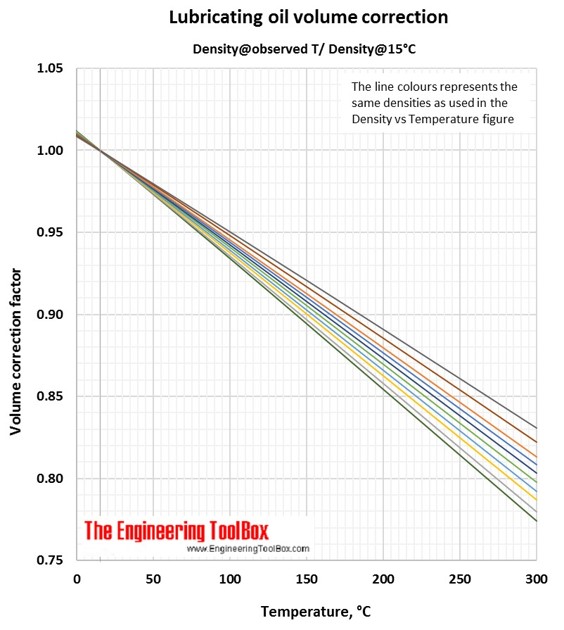


Given the large effect of PVC, it is prudent to understand the functional characteristics of the procedure, including the consequences of unavoidable inaccuracies in the parameterization of the scanner PSF. In amyloid PET imaging, GTM PVC results in substantial modification of outcome values, including standardized uptake value ratios (SUVR), which in turn, can affect amyloid-status classification, diagnostic group effect size, and longitudinal change measures.
Volume correction factors to 15 c full#
Our use of a water-filled container (unlike the NEMA protocol) was to estimate the system PSF using a setup that more closely models the full imaging situation than does the NEMA protocol which is more aimed at characterizing direct scanner effects. These values were based on averages of measurements using 18F point sources in water with no background activity. In our standard analysis procedures, for the purposes of applying an image-based partial volume correction (PVC), we simplistically model our 4-ring mCT scanner’s point-spread function as a translationally invariant Gaussian with a nearly isotropic w value of 5 mm (transverse, radial, and tangential) and 4.8 mm (axial). We note that all measurements were performed using point sources in air as is consistent with NEMA protocols. Each of these values is an average over data acquired at the axial center of the PET FOV and at a distance of 3/8 of the axial FOV from the center, which, for the mCT, corresponds to approximately 8 cm. Transaxially, w values were 4.33 mm (transverse) at a radial offset of 1 cm, 5.16 (transverse radial) and 4.72 (transverse tangential) at 10 cm radial offset, and 5.55 (transverse radial) and 6.48 (transverse tangential) at 20 cm radial offset. , who, using the NEMA 2012 protocol found w values of 4.25 mm, 5.85 mm, and 7.80 mm at radial offsets of 1 cm, 10 cm, and 20 cm respectively, all measured in the axial direction. All work cited yielded similar results to those of Rausch et al. Several authors have reported on resolution measurements of the 4-ring mCT PET/CT using NEMA 2007 or 2012 standards, which call for measurements to be made at several specified positions within the PET field of view (FOV). For example, the mean positron range in water for 18F is 0.6 mm while this value is 1.2 mm for 11C and 3.0 mm 15O. Additionally, point-source measurements made with one positron emitting isotope are not entirely appropriate for use with tracers labeled with a different isotope. However, the true functional form of the scanner point-spread function (PSF) is not Gaussian and is not translationally invariant. The convolution kernel is frequently taken to be Gaussian with a full-width at half-maximum ( w) determined from point-source measurements. While both assumptions are important, this work specifically examines the effects of convolution kernel misspecification. The method also assumes that the true distribution of activity is related to the measured distribution via an image-based convolution operation, and is usually implemented assuming a translationally invariant convolution kernel with a simple functional form. The procedure begins with the assumption that the true distribution of activity is in the form of a set of predefined regions spanning the brain, each with a homogeneous concentration of activity. A commonly employed procedure is the Geometric Transfer Matrix (GTM) method, which is essentially a deconvolution process with an implicitly assumed noise model. Image-based partial volume correction is frequently used in positron emission tomography (PET) to compensate for the effects of imperfect spatial resolution on image quantitation.


 0 kommentar(er)
0 kommentar(er)
